president
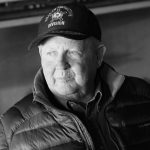 We all know about the Secret Service, but do we really know about them. They are always standing near the President and the other people they are sworn to protect, but most of the time they are virtually invisible. It’s not that we can’t see them, but rather that we don’t notice them, unless something goes haywire. Then their presence is very well known as the whisk the President to safety, while looking for the culprit who has dared to enter that guarded space that surrounds him.
We all know about the Secret Service, but do we really know about them. They are always standing near the President and the other people they are sworn to protect, but most of the time they are virtually invisible. It’s not that we can’t see them, but rather that we don’t notice them, unless something goes haywire. Then their presence is very well known as the whisk the President to safety, while looking for the culprit who has dared to enter that guarded space that surrounds him.
That is information we probably all know, but the Secret Service is much more. Founded in 1865, as an agency to stop counterfeiting, the past 150 years have seen many changes to that institution. Because it is their job to protect those they serve, the Secret Service agents must know a great deal about the people they guard, but they must also know a great deal about the essence of the political process.
Depending on their own interests, the President’s hobbies can be a pain for the Secret Service agents. If the President wants to go jogging, the Secret Service must go along, whether they like to jog or not. Also, the route must be checked, and can be a security nightmare. This applies to any trip the President makes as well.  The hotel, route, and especially the areas where he might be spending time, have to be checked and re-checked. There is no room for error, because if a gunman finds a place to hide, the President’s life could be in grave danger.
The hotel, route, and especially the areas where he might be spending time, have to be checked and re-checked. There is no room for error, because if a gunman finds a place to hide, the President’s life could be in grave danger.
Guarding the President also meant guarding his family, and if the children were young, it was much like being a glorified babysitter. The agent had to go to friends’ houses, ice cream parlors, toy stores, and a number of other places. Not all first children are well behaved, and the Secret Service witnessed it share of tantrums. If the kids didn’t like how things were going, they simply called their parents, who often told the agents to “take the child wherever he/she wanted to go.” This usually served to make the kids more bold and belligerent. Of course, not all of the children were unruly, but I would imagine that more were, than weren’t.
The Secret Service had to remain bi-partisan, because no matter what their political views were, their job was to protect the President, regardless of his political affiliation. The Secret Service agents also had to deal with the reckless behavior of the Presidents they served. Some Presidents were promiscuous, and expected their agents to warn them if their wife was coming in. Others were reckless with their own safety, as was the case when John F Kennedy, who insisted on riding through Dallas in a convertible on that fateful November day in 1963.
 While guarding the President of the United States can be stressful and worrisome, it can also be very rewarding. Of course, the Secret Service agents travel the world with the President, and they have front row seats to some of the greatest events in history. Still, some Secret Service agents actually bond with the President. Such was the case with President Ronald Reagan and Agent John Barletta. Agent Barletta says of President Reagan, “We worked so well together. The whole relationship was a projection of him, how he was… He was a great guy to be around. I wouldn’t trade those years for anything.” For most of the Secret Service agents, it is an honor and a privilege to protect the President. It doesn’t matter if the work id time consuming, complicated, and stressful. These men and women feel born to protect the President.
While guarding the President of the United States can be stressful and worrisome, it can also be very rewarding. Of course, the Secret Service agents travel the world with the President, and they have front row seats to some of the greatest events in history. Still, some Secret Service agents actually bond with the President. Such was the case with President Ronald Reagan and Agent John Barletta. Agent Barletta says of President Reagan, “We worked so well together. The whole relationship was a projection of him, how he was… He was a great guy to be around. I wouldn’t trade those years for anything.” For most of the Secret Service agents, it is an honor and a privilege to protect the President. It doesn’t matter if the work id time consuming, complicated, and stressful. These men and women feel born to protect the President.
 Every four years, Americans go to the polls to elect a new president. Looking at the first time that a president is elected, quite often, we know little about the person running for president. Even if they have been in Congress, it takes some digging to really discover who they are, and what they can do for our nation. We rely on things like the political party they belong to or the campaign promises they make. Still, we have no idea what the candidate will really do, until they are in office.
Every four years, Americans go to the polls to elect a new president. Looking at the first time that a president is elected, quite often, we know little about the person running for president. Even if they have been in Congress, it takes some digging to really discover who they are, and what they can do for our nation. We rely on things like the political party they belong to or the campaign promises they make. Still, we have no idea what the candidate will really do, until they are in office.
Sometimes, there are exceptions to that basic rule, however. Such was the case with Dwight D Eisenhower, who was the supreme commander of Allied forces in Western Europe during World War II. Of course, running a nation is not the same as running a war, unless the nation happens to be at war, that is. Nevertheless, a commander who excelled at leading a war, was by definition, a leader…making it a good bet that he could also lead a nation. Eisenhower was that kind of leader, and the people of the United States could see it clearly. He led the massive invasion of Nazi-occupied Europe that began on D-Day…June 6, 1944. Then in 1952, with victory under his belt, leading Republicans convinced Eisenhower, who by then was in command of NATO forces in Europe, to run for president. As the campaign progressed, it would remain to be seen, just how much the people of the United States thought that he would make a good leader for the nation. The election would be the telling point.
And so it went. Eisenhower won a convincing victory over Democrat Adlai Stevenson and would serve two terms in the White House (1953-1961). Even more amazing than his victory was the fact that General Dwight D Eisenhower won the American presidential elections with the largest number of popular votes ever recorded for a presidential candidate. It was a landslide victory. The people had spoken. Also of note, is that Eisenhower was the only other president to win the presidential election, having never served in any other political office. I’m sure everyone knows that the other president to do that is our current president…Donald Trump. That is an almost unheard of feat. A general and a businessman, both of whom had not been politically inclined, and yet, here they were. During his presidency, Eisenhower managed Cold War-era tensions with the Soviet Union under the looming threat of nuclear weapons, ended the war in Korea in 1953 and authorized a number of covert anti-communist operations by the CIA around the world. Here at home, America was in a period of relative prosperity, nevertheless, Eisenhower strengthened Social Security and created the massive new Interstate Highway System. Eisenhower was so well liked that he would beat Stevenson again four years later in a landslide to win re-election, despite health concerns after suffering a heart attack in 1955.
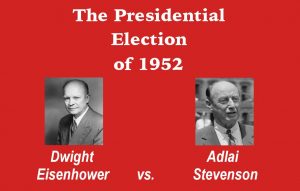
Eisenhower was born in Denison, Texas, on October 14, 1890. He grew up in Abilene, Kansas, as the third of seven sons in a poor family. His mother, a devout Mennonite and pacifist, was quite distressed when young Ike…as he was known…won an appointment to the US Military Academy at West Point, New York. Nevertheless, he went on to graduate in the middle of his class in 1915. While stationed as a second lieutenant in San Antonio, Texas, Eisenhower met Mamie Geneva Doud. The couple married in 1916 and had two sons, Doud Dwight, who died of scarlet fever as a small child, and John. World War I ended just before Eisenhower was scheduled to go to Europe, which was frustrating to the young officer, but he soon managed to acquire an appointment to the Command and General Staff College at Fort Leavenworth, Kansas. Graduating first in his class of 245, he served as a military aide to General John J Pershing, commander of US forces during World War I, and later to General Douglas MacArthur, US Army chief of staff. During his seven years serving under MacArthur, Eisenhower was stationed in the Philippines from 1935 to 1939.
Eisenhower returned soon after Nazi Germany’s invasion of Poland sparked the outbreak of World War II in Europe. In September 1941, he received his first general’s star with a promotion to brigadier general. After Japan attacked Pearl Harbor that December, US Army Chief of Staff General George C Marshall called Eisenhower to Washington, DC to work as a planning officer. Beginning in November 1942, Eisenhower headed Operation Torch, the successful Allied invasion of North Africa. He then directed the amphibious invasion of Sicily and the Italian mainland in 1943 that led to the fall of Rome in June 1944. In early 1943, he was made a full general. Eisenhower was appointed supreme commander of the Allied Expeditionary Force in December of that year and given the responsibility of spearheading the planned Allied invasion of Nazi-occupied Europe. On D-Day…June 6, 1944, more than 150,000 Allied forces crossed the English Channel and stormed the beaches of Normandy. The invasion led to the liberation of Paris on August 25 and turned the tide of the war in Europe decisively in the Allied direction. Having risen from lieutenant colonel in the Philippines to supreme commander of the victorious forces in Europe in only five years, Eisenhower returned home to a hero’s welcome in 1945 to serve as chief of staff of the US Army.
In 1948, Eisenhower left active duty and became president of New York City’s Columbia University. His brief 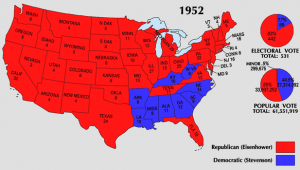 return to civilian life ended in 1950, however, when President Harry S Truman asked him to take command of the new North Atlantic Treaty Organization (NATO) forces in Europe. In that position, Eisenhower worked to create a unified military organization that would combat potential communist aggression around the globe. As President of the United States, while weathering criticism from both left and right, Eisenhower enjoyed high approval ratings throughout his administration. After leaving office in January 1961, he retired to his farm in Gettysburg, Pennsylvania. He worked largely on his memoirs, and would publish several books over the following years. He died on March 28, 1969, after a long illness.
return to civilian life ended in 1950, however, when President Harry S Truman asked him to take command of the new North Atlantic Treaty Organization (NATO) forces in Europe. In that position, Eisenhower worked to create a unified military organization that would combat potential communist aggression around the globe. As President of the United States, while weathering criticism from both left and right, Eisenhower enjoyed high approval ratings throughout his administration. After leaving office in January 1961, he retired to his farm in Gettysburg, Pennsylvania. He worked largely on his memoirs, and would publish several books over the following years. He died on March 28, 1969, after a long illness.

 Few people know that within the United States, there lies a sovereign, independent nation, that is located in and completely surrounded by territory of the United States. The nation is called Molossian, and while this nation is not recognized by any other nation, and certainly not by the United States, its founder, Kevin Baugh, born on July 30, 1962, has declared it a nation since 1977, when he claimed it as a micronation within the United States. It is also known as the Republic if Molossia. Its headquarters is located at Kevin’s home near Dayton, Nevada. On April 16, 2016, Baugh even hosted a tour of the Republic of Molossia, sponsored by the website Atlas Obscura. Kevin Baugh continues to pay property taxes, or “foreign aid” on the land to Storey County (the recognized local government). The county lists the property identified as being within the county as Manufactured Home Converted to Real Property. Kevin Baugh has stated, “We all want to think we have our own country, but you know the U.S. is a lot bigger.”
Few people know that within the United States, there lies a sovereign, independent nation, that is located in and completely surrounded by territory of the United States. The nation is called Molossian, and while this nation is not recognized by any other nation, and certainly not by the United States, its founder, Kevin Baugh, born on July 30, 1962, has declared it a nation since 1977, when he claimed it as a micronation within the United States. It is also known as the Republic if Molossia. Its headquarters is located at Kevin’s home near Dayton, Nevada. On April 16, 2016, Baugh even hosted a tour of the Republic of Molossia, sponsored by the website Atlas Obscura. Kevin Baugh continues to pay property taxes, or “foreign aid” on the land to Storey County (the recognized local government). The county lists the property identified as being within the county as Manufactured Home Converted to Real Property. Kevin Baugh has stated, “We all want to think we have our own country, but you know the U.S. is a lot bigger.”
Molossia was a kingdom for over twenty years, followed by a People’s Democratic Republic, which then became today’s Republic in 1999 XXII. His Excellency, President Kevin Baugh is the current leader of the tiny nation. The nation encompasses a total area of 11.3 acres, Molossia is one of the smallest nations on earth, boasting just 27 citizens, but they all consider themselves citizens of Molossia for sure. A sense of humor characterizes most Molossian people, which makes sense, because you would have to have a sense of humor when you live in a nation that nobody else thinks exists. This coupled with the casual and comfortable western lifestyle, makes Molossia an enjoyable place to visit…should you ever find yourself in the area of Dayton, Nevada, about 28 miles from Reno. It is also about 28 miles from Lake Tahoe, and minutes away from Virginia City. There are some things you need to know before you decide to visit the Republic of Molossia. First, you can only visit by appointment, and upon arrival, you will have to go through customs. Another interesting fact is that the Republic of Molossia has its own currency, called the valora, which is subdivided into 100 futtrus and pegged to the relative value of Pillsbury cookie dough. Cookie dough is stored in an outbuilding called the Bank of Molossia, from which valora coins made from gambling chips and printed banknotes are sold. The Republic of Molossia also has its own Navy, Naval Academy, Space Program, Railroad, Postal Service, Bank, tourist attractions, measurement system, holidays, online movie theater, online radio station, and even its own time zone, although none of these things are recognized outside of Molossia.
The origins of Molossia come from a micronation childhood project, called The Grand Republic of Vuldstein, founded by Baugh and James Spielman on May 26, 1977, located in the same place as present day Molossia. Vuldstein was run and populated by King James I (Spielman), and Prime Minister (Baugh), although Spielman soon left “Vuldstein” and moved elsewhere, and more likely outgrew the childhood fantasy. Baugh used this name for several nomadic kingdoms as he traveled to Europe. From 1998 to 1999, Molossia was a member of the United Provinces of Utopia 3. On September 3, 1999, Baugh created the Republic of Molossia as a successor country to Vuldstein, and declared himself president. On November 13, 2012, Kevin Baugh created a petition on the Whitehouse.gov We the People website to obtain official recognition of his micronation. He declared that at the last census, held on March 18, 2012, 27 inhabitants lived in Molossia. It is the Baugh family’s primary place of residence, and the site of Molossia’s designated capital, Baughston. Baughston was renamed from Espera on 30 July 2013 to commemorate President Baugh’s 51st birthday. And true to any sovereign nation, the Republic of Molossia claims to be at war with East Germany. What is a nation without a war? The Republic of Molossia alleges that East Germany is responsible for military drills performed by Kevin 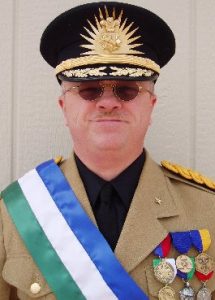
 Baugh while stationed with the United States Military in West Germany, and therefore are also responsible for the resulting lack of sleep. While East Germany formally ceased to exist in 1991 via the Treaty on the Final Settlement with Respect to Germany, Molossia argues that “Ernst Thälmann Island, through dedication by Cuba to Weimar German politician Ernst Thälmann and lack of mention in the Treaty on the Final Settlement or by the nation of Cuba either, is still East German land, allowing the war to continue.” I can’t say why Baugh believes that he can have a sovereign nation within the borders of an already sovereign nation, but apparently he does.
Baugh while stationed with the United States Military in West Germany, and therefore are also responsible for the resulting lack of sleep. While East Germany formally ceased to exist in 1991 via the Treaty on the Final Settlement with Respect to Germany, Molossia argues that “Ernst Thälmann Island, through dedication by Cuba to Weimar German politician Ernst Thälmann and lack of mention in the Treaty on the Final Settlement or by the nation of Cuba either, is still East German land, allowing the war to continue.” I can’t say why Baugh believes that he can have a sovereign nation within the borders of an already sovereign nation, but apparently he does.
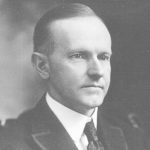 The Indian tribes didn’t usually have much use for the White Man, especially the ones who worked for the government. It seemed all they wanted to do was to herd the Indians onto the reservations and take away their lands, culture, and their language. This made the majority of Indians pretty angry, but President Calvin Coolidge was different than most government people. It wasn’t a matter of what he was able to accomplish, but rather what he wished he could accomplish, and maybe what he set the stage for…and mostly what the Indians knew was in his heart.
The Indian tribes didn’t usually have much use for the White Man, especially the ones who worked for the government. It seemed all they wanted to do was to herd the Indians onto the reservations and take away their lands, culture, and their language. This made the majority of Indians pretty angry, but President Calvin Coolidge was different than most government people. It wasn’t a matter of what he was able to accomplish, but rather what he wished he could accomplish, and maybe what he set the stage for…and mostly what the Indians knew was in his heart.
President Coolidge had made it very clear that, on personal moral grounds, he sincerely regretted the state of poverty to which many Indian tribes had sunk after decades of legal persecution and forced assimilation had been forced upon them. Coolidge made a public policy toward Indians, that included the Indian Citizen Act of 1924, which granted automatic United States citizenship to all American tribes, something that made perfect sense, since they had been here longer than the nation had existed. Nevertheless, during his two terms in office, while Coolidge  presented a public image as a strong proponent of tribal rights, the United States government policies of forced assimilation remained in full swing during his administration. At this time, all Indian children were placed in federally funded boarding schools in an effort to familiarize them with white culture and train them in marketable skills. During their schooling, they were separated from their families and stripped of their native language and culture, something that should never have happened, and something that has since been changed.
presented a public image as a strong proponent of tribal rights, the United States government policies of forced assimilation remained in full swing during his administration. At this time, all Indian children were placed in federally funded boarding schools in an effort to familiarize them with white culture and train them in marketable skills. During their schooling, they were separated from their families and stripped of their native language and culture, something that should never have happened, and something that has since been changed.
While not able to fix all the wrongs done to the Indians, Coolidge was still considered a friend of the Indians. In 1927, he planned a trip to the Black Hills region of North Dakota. In anticipation of the trip, the Sioux County Pioneer newspaper reported that a Sioux elder named Chauncey Yellow Robe, a descendant of Sitting Bull and an Indian school administrator, had suggested that Coolidge be inducted into the tribe. The article stated that 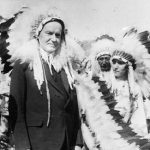 Yellow Robe graciously offered the president a “most sincere and hearty welcome” and hoped that Coolidge and his wife would enjoy “rest, peace, quiet and friendship among us.” Calvin Coolidge was very pleased at the offer, and decided to accept. This was not something that was offered to many people, so it was a great honor. The Sioux County Pioneer newspaper of North Dakota reported that on June 23, 1927 President Calvin Coolidge would be “adopted” into a Sioux tribe at Fort Yates on the south central border of North Dakota. At the Sioux ceremony in 1927, photographers captured Coolidge, in suit and tie, as he was given a grand ceremonial feathered headdress by Sioux Chief Henry Standing Bear and officially declared an honorary tribal member.
Yellow Robe graciously offered the president a “most sincere and hearty welcome” and hoped that Coolidge and his wife would enjoy “rest, peace, quiet and friendship among us.” Calvin Coolidge was very pleased at the offer, and decided to accept. This was not something that was offered to many people, so it was a great honor. The Sioux County Pioneer newspaper of North Dakota reported that on June 23, 1927 President Calvin Coolidge would be “adopted” into a Sioux tribe at Fort Yates on the south central border of North Dakota. At the Sioux ceremony in 1927, photographers captured Coolidge, in suit and tie, as he was given a grand ceremonial feathered headdress by Sioux Chief Henry Standing Bear and officially declared an honorary tribal member.
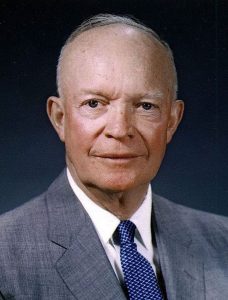 Recently, I found out that President Dwight D Eisenhower is my sixth cousin six times removed. We are connected on my mother’s side through her Pattan roots, which is her mother’s side. Eisenhower was the 34th president of the Unites States, serving from January 20, 1953 to January 20, 1961. He was also a five-star general in the United States Army during World War II and served as Supreme Commander of the Allied Expeditionary Forces in Europe. Eisenhower was responsible for planning and supervising the invasion of North Africa in Operation Torch in 1942 – 1943 and the successful invasion of France and Germany in 1944 – 1945 from the Western Front. In 1951, he became the first Supreme Commander of NATO.
Recently, I found out that President Dwight D Eisenhower is my sixth cousin six times removed. We are connected on my mother’s side through her Pattan roots, which is her mother’s side. Eisenhower was the 34th president of the Unites States, serving from January 20, 1953 to January 20, 1961. He was also a five-star general in the United States Army during World War II and served as Supreme Commander of the Allied Expeditionary Forces in Europe. Eisenhower was responsible for planning and supervising the invasion of North Africa in Operation Torch in 1942 – 1943 and the successful invasion of France and Germany in 1944 – 1945 from the Western Front. In 1951, he became the first Supreme Commander of NATO.
With everything else that he did, it seems odd, I suppose, to mention the fact that on March 18, 1959, he signed the Admission Act. Basically, the act dissolved the Territory of Hawaii and established the State of Hawaii as the 50th state to be admitted into the Union. Statehood became effective on August 21, 1959…the last state to join the United States. Eisenhower, in fact, was the president who signed the last two states into the United States. To me that must have been such an awe inspiring thing to get to do. My guess is that Eisenhower really had no idea that Hawaii would forever be the last state in the United States, and I suppose that it is still possible that 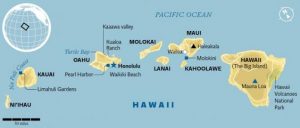 another may join, but it has been almost 58 years, so it seems highly unlikely that there will be another. I wonder if, as his life was drawing to a close, Eisenhower gave any thought to the fact that he got to do that…to bring in the final two states in the United States. I also wonder if anyone thought there would ever be more states after Arizona and New Mexico were added in 1912, almost 47 years earlier. Maybe, adding another state to our country didn’t seem like such an important thing for a president to do, but I think it is. And to be the president to add the last two states…well, I just think that is very cool.
another may join, but it has been almost 58 years, so it seems highly unlikely that there will be another. I wonder if, as his life was drawing to a close, Eisenhower gave any thought to the fact that he got to do that…to bring in the final two states in the United States. I also wonder if anyone thought there would ever be more states after Arizona and New Mexico were added in 1912, almost 47 years earlier. Maybe, adding another state to our country didn’t seem like such an important thing for a president to do, but I think it is. And to be the president to add the last two states…well, I just think that is very cool.
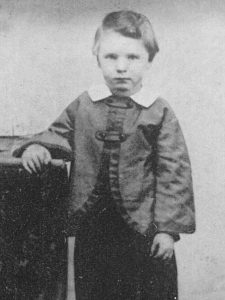 When we think of the White House, we seldom think of death. Oh, there have been presidents who were assassinated, or died while in office, but mostly not in the White House. It is too well guarded, and an ill president usually was taken to a hospital. Nevertheless, death has visited the White House, and the case I am referring to was not a president, but rather his son. Abraham Lincoln is my 7th cousin thrice removed, making his children, my 7th cousins 4 times removed. Lincoln married Mary Todd on November 4, 1842, in Springfield, Illinois. They were the parents of four sons Robert Todd Lincoln was born in 1843 and Edward Baker “Eddie” Lincoln in 1846. Edward died on February 1, 1850, in Springfield, probably of Tuberculosis. William Wallace “Willie” Lincoln was born on December 21, 1850, and died of a Typhoid Fever on February 20, 1862. The Lincolns’ fourth son, Thomas “Tad” Lincoln, was born on April 4, 1853, and died of heart failure at the age of 18 on July 16, 1871. While three of the four boys died in childhood, only one, Willie passed away in the White House.
When we think of the White House, we seldom think of death. Oh, there have been presidents who were assassinated, or died while in office, but mostly not in the White House. It is too well guarded, and an ill president usually was taken to a hospital. Nevertheless, death has visited the White House, and the case I am referring to was not a president, but rather his son. Abraham Lincoln is my 7th cousin thrice removed, making his children, my 7th cousins 4 times removed. Lincoln married Mary Todd on November 4, 1842, in Springfield, Illinois. They were the parents of four sons Robert Todd Lincoln was born in 1843 and Edward Baker “Eddie” Lincoln in 1846. Edward died on February 1, 1850, in Springfield, probably of Tuberculosis. William Wallace “Willie” Lincoln was born on December 21, 1850, and died of a Typhoid Fever on February 20, 1862. The Lincolns’ fourth son, Thomas “Tad” Lincoln, was born on April 4, 1853, and died of heart failure at the age of 18 on July 16, 1871. While three of the four boys died in childhood, only one, Willie passed away in the White House.
Disease was a scary thing in those days, because many serious diseases, which we have cures for now, were a death sentence in those days. Little Willie Lincoln had contracted Typhoid Fever. Typhoid fever, also known simply as typhoid, is a bacterial infection due to Salmonella Typhi that causes symptoms which may vary from mild to severe and usually begin six to thirty days after exposure. The disease was all over Washington DC, and  even the White House was not safe from it’s deathly grip. In fact, Willie was not the only one to have it. His brother, Tad was in bed just down the hall, with the same illness. Tad would survive, but I have to wonder if his heart was not severely weakened by the disease, because he passed away just nine years later of heart failure. On February 20, 1862, little 11 year old Willie succumbed to the Typhoid Fever at 5:00pm. His parents were with him, and Abraham Lincoln said, “My poor boy, he was too good for this earth. God has called him home. I know that he is much better off in heaven, but then we loved him so. It is hard, hard to have him die!” Mary watched him bury his head in his hands, “his tall frame convulsed with emotion.” At the foot of the bed she stood “in silent, awe-stricken wonder,” marveling that so rugged a man could be so moved. “I shall never forget those solemn moments — genius and greatness weeping over love’s idol lost.” President Lincoln then walked down the hall to his secretary’s office. He startled the half-dozing secretary with the news: “Well, Nicolay, my boy is gone — he is actually gone!” John Nicolay recalled seeing his boss burst into tears before entering his own office. I think I have to agree with Mary. When we think of Abraham Lincoln, we think of a strong man, but if we think about it, he also had a softer side, and he loved children.
even the White House was not safe from it’s deathly grip. In fact, Willie was not the only one to have it. His brother, Tad was in bed just down the hall, with the same illness. Tad would survive, but I have to wonder if his heart was not severely weakened by the disease, because he passed away just nine years later of heart failure. On February 20, 1862, little 11 year old Willie succumbed to the Typhoid Fever at 5:00pm. His parents were with him, and Abraham Lincoln said, “My poor boy, he was too good for this earth. God has called him home. I know that he is much better off in heaven, but then we loved him so. It is hard, hard to have him die!” Mary watched him bury his head in his hands, “his tall frame convulsed with emotion.” At the foot of the bed she stood “in silent, awe-stricken wonder,” marveling that so rugged a man could be so moved. “I shall never forget those solemn moments — genius and greatness weeping over love’s idol lost.” President Lincoln then walked down the hall to his secretary’s office. He startled the half-dozing secretary with the news: “Well, Nicolay, my boy is gone — he is actually gone!” John Nicolay recalled seeing his boss burst into tears before entering his own office. I think I have to agree with Mary. When we think of Abraham Lincoln, we think of a strong man, but if we think about it, he also had a softer side, and he loved children.
 Willie Lincoln was a favorite around the White House. In the words of a government official’s wife, “The White House is sad and still, for its joy and light have fled with little Willie. He was a very bright child, remarkably precocious for his age, and had endeared himself to every one who knew him.” Mary Lincoln’s cousin said he was “noble, beautiful…a counterpart of his father, save that he was handsome.” Mary herself called him the “idolized child, of the household.” It’s somewhat strange to think that such a large household as the White House, with all of it’s staff who work there, could be so changed by the death of a child, but Willie Lincoln was not an ordinary child. Had he been, he might not have come to the attention of everyone in the White House. Most of us know who the first children are but the White House staff knew Willie Lincoln and dearly loved him. As dates in history go, while this little boy was not an important man is the way we think of that today, he had a impact that went far beyond his short time on this earth, and his dying day was one that saddened a nation.
Willie Lincoln was a favorite around the White House. In the words of a government official’s wife, “The White House is sad and still, for its joy and light have fled with little Willie. He was a very bright child, remarkably precocious for his age, and had endeared himself to every one who knew him.” Mary Lincoln’s cousin said he was “noble, beautiful…a counterpart of his father, save that he was handsome.” Mary herself called him the “idolized child, of the household.” It’s somewhat strange to think that such a large household as the White House, with all of it’s staff who work there, could be so changed by the death of a child, but Willie Lincoln was not an ordinary child. Had he been, he might not have come to the attention of everyone in the White House. Most of us know who the first children are but the White House staff knew Willie Lincoln and dearly loved him. As dates in history go, while this little boy was not an important man is the way we think of that today, he had a impact that went far beyond his short time on this earth, and his dying day was one that saddened a nation.

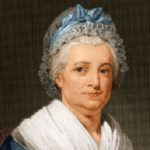 When we think of dinners with the President of the United States, we think of state dinners with tons of security, and massive pre-planning. Presidential dinners have changed distinctly since Washington’s day. The nation was much smaller for sure, and he could easily get together with all of his advisors and Congress in one place, I’m sure. In fact, George Washington was basically in uncharted waters. So, he decided that on Thursday evenings, he would have the brightest minds in the nation over for a casual dinner. At that time the nation’s capitol was still in New York City, so those casual dinners were never held in the White House. George Washington and his family lived in executive mansions in lower Manhattan, which was close to other governmental buildings in that era. While Washington entertained foreign dignitaries and other heads of state at public receptions on Tuesdays and Martha Washington regularly invited guests to their home on Fridays, Thursday evenings were reserved for formal dinners with congressional leaders, their wives and close personal friends of the Washingtons.
When we think of dinners with the President of the United States, we think of state dinners with tons of security, and massive pre-planning. Presidential dinners have changed distinctly since Washington’s day. The nation was much smaller for sure, and he could easily get together with all of his advisors and Congress in one place, I’m sure. In fact, George Washington was basically in uncharted waters. So, he decided that on Thursday evenings, he would have the brightest minds in the nation over for a casual dinner. At that time the nation’s capitol was still in New York City, so those casual dinners were never held in the White House. George Washington and his family lived in executive mansions in lower Manhattan, which was close to other governmental buildings in that era. While Washington entertained foreign dignitaries and other heads of state at public receptions on Tuesdays and Martha Washington regularly invited guests to their home on Fridays, Thursday evenings were reserved for formal dinners with congressional leaders, their wives and close personal friends of the Washingtons.
In reality, these dinners were elaborate affairs. They started promptly at 4:00pm, because Washington refused to wait for latecomers. I guess every president has his own idiosyncrasies. The parties numbered up to two dozen people, gathered around a table set with the Washington family silver and china. Unlike some state dinners, in which the President and his wife occupy the head of the table, Martha Washington preferred to sit in the middle of one side of the long table and President Washington sat directly across from her. The ends of the table were occupied by a secretary to help with the conversation and roast carving. The roast carving was necessary too, because there were a lot of roasts to be carved. The dinners were comprised of three courses, but that did no limit the selection. There would commonly be upwards of twenty different dishes in each course…all of which were brought to the table at the same time.
The various dishes were the finest that New York had to offer, and the guests were lavished with the exquisite meals. Manhattan was in the middle of New York City, but in 1700, it was still quite wild. The island had an assortment of venison, rabbit, and duck that were hunted for food. Oysters were abundant in the Hudson River. Jellies, dried fruits and nuts were served alongside, although you wouldn’t have seen potato or tomato dishes, because those foods were regarded as unfit for humans to eat in those days. Wine was drunk with dinner, although George Washington was said to prefer a tankard of ale over a glass of claret.
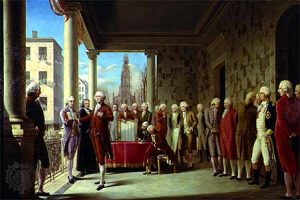
When dinner was over, Washington would raise a toast to the assembly, and then the ladies would retire to Martha’s drawing room for “coffee and civilized conversation.” The gentlemen would remain in the dining room, lingering over cigars and wine, but not for very long. The president only stayed another thirty minutes before joining the women in the drawing room. One of his personal secretaries would stay on in the dining room with the men to preside over political chats for another hour or so, until the company left and the Washingtons’ Thursday dinner was over…until the next week. George Washington passed away on this day, December 14, 1799.
 For many years the United States and Russia, at one time the Soviet Union, have had an unusual relationship. Depending on what Russia is trying to do, they might be our enemy, or they might be our ally. I understand that different nations have different goals, different values, and different motives, but it still seems odd to me that in one war, we could be allies and in another war, we become enemies. It could seem a little bit like two childhood friends, who are best friends one minute and worst enemies the next minute. The only exception would have to be the fact that trust doesn’t really fit in with the rest of the characteristics of the relationship between the United States and Russia. I suppose that becoming allies then, becomes a matter of finding an enemy who is doing things you can’t accept, and another enemy who agrees with you on your dislike of the actions of the first enemy…if that makes sense. I think that my prior statement makes as much sense as the United States being an ally of Russia, but that is what they have been…sometimes. I think the most difficult part of that kind of relationship would have to be the point when the relationship turns from ally to enemy again, because it really is inevitable.
For many years the United States and Russia, at one time the Soviet Union, have had an unusual relationship. Depending on what Russia is trying to do, they might be our enemy, or they might be our ally. I understand that different nations have different goals, different values, and different motives, but it still seems odd to me that in one war, we could be allies and in another war, we become enemies. It could seem a little bit like two childhood friends, who are best friends one minute and worst enemies the next minute. The only exception would have to be the fact that trust doesn’t really fit in with the rest of the characteristics of the relationship between the United States and Russia. I suppose that becoming allies then, becomes a matter of finding an enemy who is doing things you can’t accept, and another enemy who agrees with you on your dislike of the actions of the first enemy…if that makes sense. I think that my prior statement makes as much sense as the United States being an ally of Russia, but that is what they have been…sometimes. I think the most difficult part of that kind of relationship would have to be the point when the relationship turns from ally to enemy again, because it really is inevitable.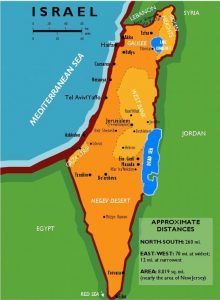
It is historical fact, that over the years the Untied States and Russia have found themselves on opposite sides of a war…even threatening to blow each other up with a nuclear bomb, but so far, both have also hesitated to take things to that level, because the start of that kind of war would likely bring inhalation, since each country has the ability to know that such an attack has started. It’s a good thing that technology has given us that ability, because if we had the nuclear bombs we now have and no way the know that an attack had commenced, one nation could easily wipe out another. Russia has often tested the United States when they have moved to attack weaker nations for the things they wanted, such as oil, food, and power. Their actions left the United States with no other options but to fight against the nation that was sometimes an ally. It has happened in the past, and it will happen again in the future, because Russia remains an enemy of Israel, and that at the very least, is a situation in which the United States would want to act. Israel has always been our ally…not a sometimes ally, and if we are able, we would protect them. At least I pray that we would.
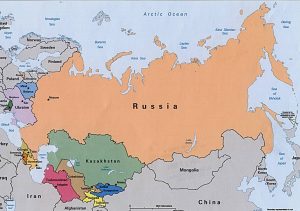 The biggest factor to affect the relationships between countries is their leaders. Most of the history of the United States has found our leaders acknowledging and even embracing our longtime, and very important friendship with Israel. Nevertheless, some leaders, like our current president, have made it clear that Israel is in a precarious position in the world. I am thankful that our president elect has told us that he will be a friend to Israel and other nations that have been oppressed by power nations in the past. It remains to be seen, exactly where Russia will be in this scenario. It is my hope that they will be an ally, but I know that they are still an enemy of our friends, and that can only make us sometimes allies.
The biggest factor to affect the relationships between countries is their leaders. Most of the history of the United States has found our leaders acknowledging and even embracing our longtime, and very important friendship with Israel. Nevertheless, some leaders, like our current president, have made it clear that Israel is in a precarious position in the world. I am thankful that our president elect has told us that he will be a friend to Israel and other nations that have been oppressed by power nations in the past. It remains to be seen, exactly where Russia will be in this scenario. It is my hope that they will be an ally, but I know that they are still an enemy of our friends, and that can only make us sometimes allies.
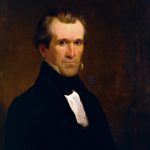 I was looking at a fact site last night, and found a list of unusual facts about the presidents of the United States. While the facts about each president were everything from strange, to bizarre, to amazing, I found myself drawn to what I read about James K Polk, who happens to be the 2nd cousin 1x removed of the husband of my 5th cousin 2x removed. That sounds very confusing to people, and I can say that it is confusing to me too. Nevertheless, my family and my husband, Bob’s family trees are intertwined, and that is a fact I have known for a while now. James Polk is just another in the line of people we are both connected to. Those are the facts I knew about James K Polk…as well as, the fact that his middle name is Knox and that is how he is related to Bob’s side of our family. My own connection comes from the Allen side of my dad’s family…and that I did not know before.
I was looking at a fact site last night, and found a list of unusual facts about the presidents of the United States. While the facts about each president were everything from strange, to bizarre, to amazing, I found myself drawn to what I read about James K Polk, who happens to be the 2nd cousin 1x removed of the husband of my 5th cousin 2x removed. That sounds very confusing to people, and I can say that it is confusing to me too. Nevertheless, my family and my husband, Bob’s family trees are intertwined, and that is a fact I have known for a while now. James Polk is just another in the line of people we are both connected to. Those are the facts I knew about James K Polk…as well as, the fact that his middle name is Knox and that is how he is related to Bob’s side of our family. My own connection comes from the Allen side of my dad’s family…and that I did not know before.
James K Polk was the first president to be elected under the age of 50, and the youngest to die, with the exception of Garfield and Kennedy, both of whom were assassinated. Polk had surgery at the age of 17, to remove stones from his bladder. This was before anesthesia was invented, so he was awake for the entire 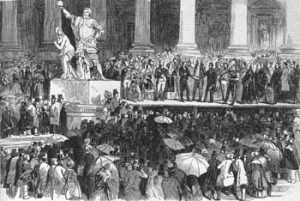 procedure. I can’t imagine how painful that must have been. Polk is the only Speaker of the US House of Representatives to become President of the United States. His years as president were active ones. They saw three states added to the nation, the first Women’s Rights Convention was held, the sewing machine, gas lighting, and the rotary printing press were invented, and the Gold Rush began. Polk was a highly motivated president, and it is believed that he worked so hard while serving as president that he weakened himself, causing his death shortly after leaving office.
procedure. I can’t imagine how painful that must have been. Polk is the only Speaker of the US House of Representatives to become President of the United States. His years as president were active ones. They saw three states added to the nation, the first Women’s Rights Convention was held, the sewing machine, gas lighting, and the rotary printing press were invented, and the Gold Rush began. Polk was a highly motivated president, and it is believed that he worked so hard while serving as president that he weakened himself, causing his death shortly after leaving office.
Polk had just two years of formal schooling prior to entering the University of North Carolina as a sophomore. He was a member of a debating society in college, and he found that he had an interest in law and government. Polk graduated with top honors in mathematics and the classics. Then he returned home to Tennessee to become a lawyer. To receive legal training, he worked in the office of Nashville trial attorney, Felix Grundy and then served as clerk of the Tennessee Senate. Polk was diligent and ambitious, and soon 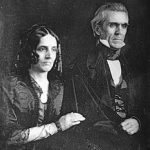 established a law practice in Columbia, Tennessee. At 27 years of age, Polk’s interests turned to politics, and he defeated an incumbent for a seat in the Tennessee Legislature. During his time as state representative, he met and eventually married Sarah Childress, who was the very intelligent daughter of a Murfreesboro merchant. She was well educated and her social grace impressed their peers. She became her husband’s personal and political confidant, it was her involvement in his campaigns that helped to ensure his victories. Fervently supporting the policies of fellow Tennessee Democrat Andrew Jackson, Polk was elected to the United States Congress at 29. His Congressional career lasted 14 years and included two terms as Speaker of the House. He must have been well liked to then go on the become President of the United States as well.
established a law practice in Columbia, Tennessee. At 27 years of age, Polk’s interests turned to politics, and he defeated an incumbent for a seat in the Tennessee Legislature. During his time as state representative, he met and eventually married Sarah Childress, who was the very intelligent daughter of a Murfreesboro merchant. She was well educated and her social grace impressed their peers. She became her husband’s personal and political confidant, it was her involvement in his campaigns that helped to ensure his victories. Fervently supporting the policies of fellow Tennessee Democrat Andrew Jackson, Polk was elected to the United States Congress at 29. His Congressional career lasted 14 years and included two terms as Speaker of the House. He must have been well liked to then go on the become President of the United States as well.
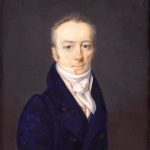
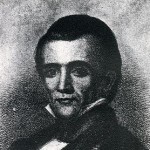 Before Bob and I were even married, I knew that he was related to one of our presidents…namely James Knox Polk. Since then, I have found that we are actually related to several presidents, but James K Polk remains the one with whom the link seems the most obvious. Still, while I knew of the relationship, there were things about him that I didn’t know. One of the most notable being his connection to the Smithsonian Institution. In 1829, one James Smithson died in Italy, and while most people would not think that would have impacted the United States of America, it actually did. So, who was Smithson anyway. Smithson had been a fellow of the venerable Royal Society of London from the age of 22, publishing numerous scientific papers on mineral composition, geology, and chemistry. In 1802, he overturned popular scientific opinion by proving that zinc carbonates were true carbonate minerals, and one type of zinc carbonate was later named Smithsonite in his honor.
Before Bob and I were even married, I knew that he was related to one of our presidents…namely James Knox Polk. Since then, I have found that we are actually related to several presidents, but James K Polk remains the one with whom the link seems the most obvious. Still, while I knew of the relationship, there were things about him that I didn’t know. One of the most notable being his connection to the Smithsonian Institution. In 1829, one James Smithson died in Italy, and while most people would not think that would have impacted the United States of America, it actually did. So, who was Smithson anyway. Smithson had been a fellow of the venerable Royal Society of London from the age of 22, publishing numerous scientific papers on mineral composition, geology, and chemistry. In 1802, he overturned popular scientific opinion by proving that zinc carbonates were true carbonate minerals, and one type of zinc carbonate was later named Smithsonite in his honor.
James Smithson’s will had one odd footnote to it, that in the end, would change everything. Smithson didn’t have much family, in fact, he had just one nephew at the time of his passing. His entire estate was willed to that nephew, with one condition attached to it. If his nephew should die without children, the entire estate was to go to “the United States of America, to found at Washington, under the name of the Smithsonian Institution, an Establishment for the increase and diffusion of knowledge.” Smithson’s curious bequest to a country that he had never visited garnered significant attention on both sides of the Atlantic Ocean. James Smithson was a scientist, who wasn’t well known, but he apparently had a dream for the United States…a country that somehow held his interest. Six years after his death, his nephew, Henry James Hungerford, indeed died without children, and on July 1, 1836, the United States Congress authorized acceptance of Smithson’s gift. President Andrew Jackson sent diplomat Richard Rush to England to negotiate for transfer of the funds, and two years later Rush set sail for home with 11 boxes containing a total of 104,960 gold sovereigns, 8 shillings, and 7 pence, as well as Smithson’s mineral collection, library, scientific notes, and personal effects. After the gold was melted down, it amounted to a fortune worth well over $500,000.
The money was sent to the United States with Smithson’s instructions for its use. It might have seemed like a simple request at the time of the will’s writing, but in the end, the money would sit in the bank waiting for a decade. The reason…a debate on how to use the money. Apparently, even though instructions for the money’s use were given, they did leave a few of the details up to the United States government. Finally, on this day August 10, 1846 James K Polk signed the Smithsonian Institution Act into law. After considering a series of recommendations, including the creation of a national university, a public library, or an astronomical observatory, Congress agreed that the bequest would support the creation of a museum, a library, and a program of research, publication, and collection in the sciences, arts, and history.
Today, the Smithsonian is composed of 19 museums and galleries including the recently announced National Museum of African American History and Culture, nine research facilities throughout the United States and the world, and the national zoo. Besides the original Smithsonian Institution Building, popularly known as the  Castle, visitors to Washington DC, tour the National Museum of Natural History, which houses the natural science collections, the National Zoological Park, and the National Portrait Gallery. The National Museum of American History houses the original Star-Spangled Banner and other artifacts of United States history. The National Air and Space Museum has the distinction of being the most visited museum in the world, exhibiting such marvels of aviation and space history as the Wright brothers’ plane and Freedom 7, the space capsule that took the first American into space. John Smithson, the Smithsonian Institution’s great benefactor, is interred in a tomb in the Smithsonian Building. It has been a pretty amazing use of that money. I think James Smithson would be pleased.
Castle, visitors to Washington DC, tour the National Museum of Natural History, which houses the natural science collections, the National Zoological Park, and the National Portrait Gallery. The National Museum of American History houses the original Star-Spangled Banner and other artifacts of United States history. The National Air and Space Museum has the distinction of being the most visited museum in the world, exhibiting such marvels of aviation and space history as the Wright brothers’ plane and Freedom 7, the space capsule that took the first American into space. John Smithson, the Smithsonian Institution’s great benefactor, is interred in a tomb in the Smithsonian Building. It has been a pretty amazing use of that money. I think James Smithson would be pleased.

